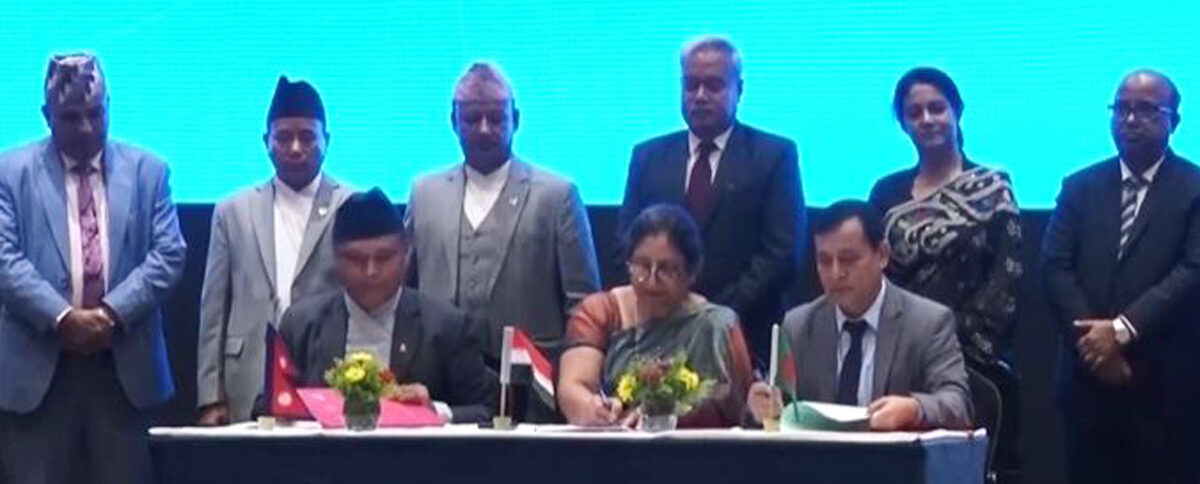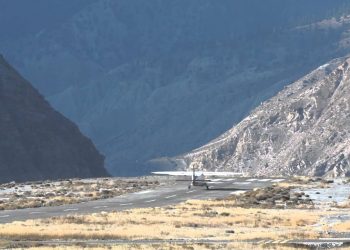KATHMANDU: The long-awaited tripartite power trade deal was signed on Thursday in Kathmandu paving ways to export Nepal’s hydroelectricity to Bangladesh.
With the agreement in force, Nepal will export 40 megawatts of power to Bangladesh.
Executive Director of Nepal Electricity Authority (NEA) Kulman Ghising, Chairperson of Bangladesh’s Power Development Board Mohammad Rezaul Karim and Chief Executive Officer of India’s NVVN, the nodal agency, Renu Narang signed the agreement in Kathmandu today.
The agreement was signed in the presence of Nepal’s Energy Minister Dipak Khadka and Bangladesh’s Minister for Forest, Environment, Climate Change, and Water Resources Syeda Rizwana Hasan.
As agreed, the NEA shall provide power to India’s NVVN and then the Indian company shall transmit power to Bangladesh by using Indian infrastructure.
The power shall be exported through the first trans-border transmission line of 400 KV capacity between Nepal and India.
The NEA is preparing to export 25 megawatts of power from Trishuli Hydropower Project and 22 megawatts from Chilime Hydropower Project.
The NEA has already received approval from the Indian side to export power from these two projects.
The NEA shall export power to Bangladesh for five months beginning June 15 to November 15 during the monsoon season.
As agreed, 144,000 megawatts hour power will be exported during the five months.
According to the NEA, per unit power will be sold at Rs 9.30. As per the agreement, the NEA will begin to export power within some days.
Meanwhile, the joint directorate committee’s meeting of the secretary-level of Nepal and Bangladesh was held on Wednesday.
Likewise, agreement to develop Sunkoshi Hydropower Project-III in partnership with Nepal, Bangladesh and India would be finalized soon and to develop the project a joint venture company will be established in partnership with NEA and Bangladesh’s Power Development Board.
Similarly, a process to sign a deal between NEA and Bangladesh’s Power Development Board for the development of Sunkoshi Reservoir-based Hydropower Project with a capacity of 680 megawatts of electricity has been initiated.









Comment